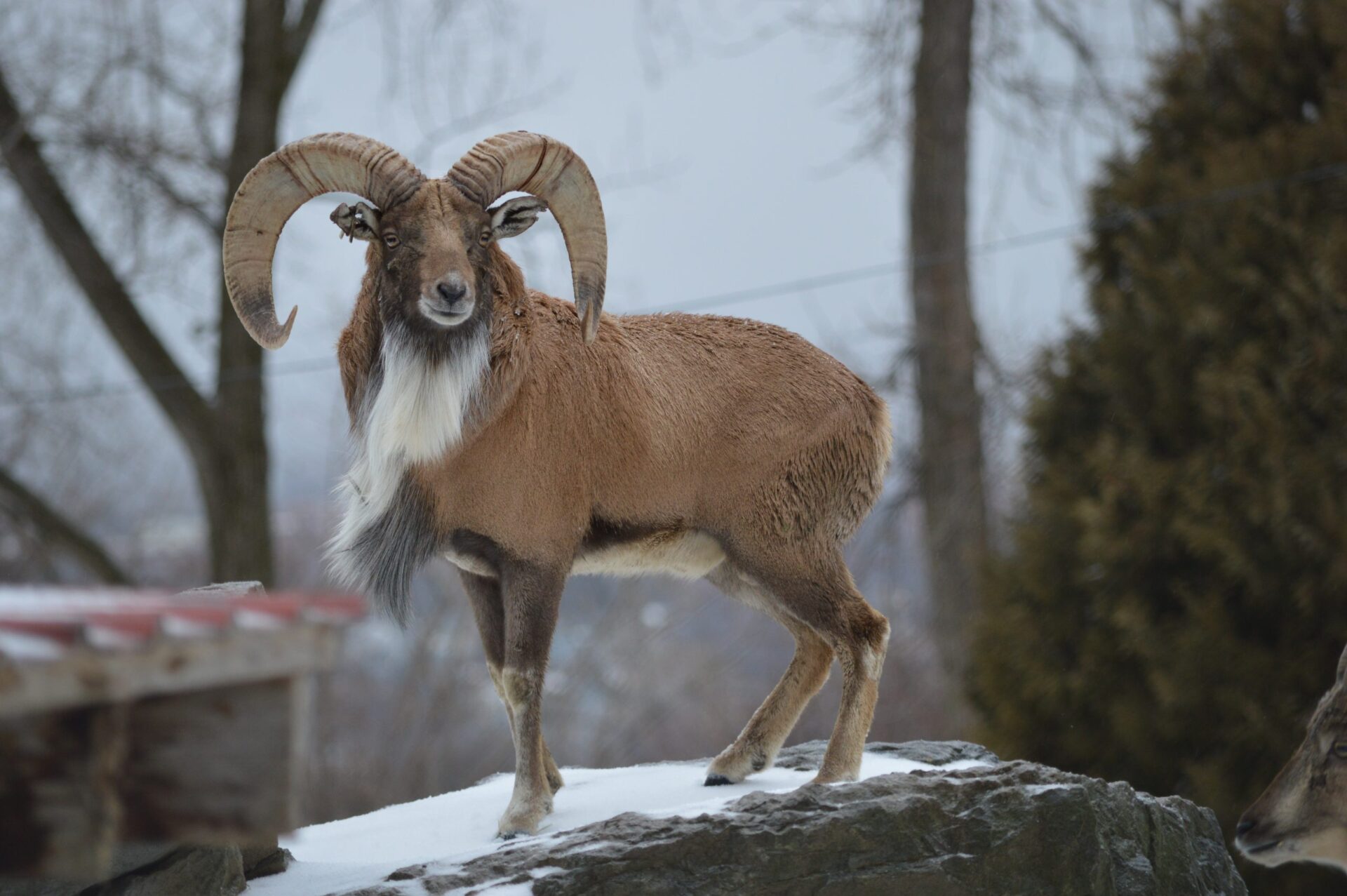Transcaspian Urial

Basic Information:
Scientific Name: Ovis vignei arkal
Habitat: Transcaspian Urials can be found plateaus, coastal cliffs, and mountainous regions of Kazakhstan, Uzbekistan, Turkmenistan, Iran, India, and Afghanistan.
Diet: Transcaspian Urials mostly eat grass, shrubs, and – occasionally – grains.
Size: 3 to 4 feet tall / 3.5 to 5 feet long
Weight: 100 to 200 pounds
Lifespan: About 14 years in the wild. Up to 20 years in human care.
Distribution Map:
I.U.C.N. Conservation Status:

What does this mean?
Vulnerable – a species determined by the International Union for Conservation of Nature (I.U.C.N.) to possess a high risk of extinction as a result of rapid population declines of 30 to more than 50 percent over the previous 10 years (or three generations), a current population size of fewer than 1,000 individuals, or other factors.
Our Transcaspian Urials:
Pyari (Female) – Born April 20, 2012
Samina (Female) – Born April 11, 2013
Aankhen (Male) – Born May 10, 2016
About Transcaspian Urials:
Native to western central Asia from Iran to Kazakhstan to Pakistan to northern India, the Transcaspian Urial is the modern domestic sheep’s ancestor as well as the oldest line of the Ovis species. They often inhabit lower elevation areas where grazing opportunities are more common. That being said, this brings them into more contact with farmers and creates competition between livestock and wild urials. Due to this, urials are often hunted in order to eliminate this threat to local farmers’ livelihoods. These urials are also threatened by poachers who enjoy obtaining the large horns of males. These 2.5 foot long horns are used within urial groups to determine the leader. Whomever’ s horns are the largest and most curled gets that accolade. Should this determination be difficult to make, males will compete with each other by fighting with their horns until a winner is decided upon.
Did You Know?!
- Sheep – like the Transcaspian urial – have great memories and can remember more than 50 individual sheep and people by using a similar part of the brain and neural process that humans use to remember.
- Sheep – like the Transcaspian urial – can self-medicate when they are ill by eating particular plants that can cure them of various ailments.
- Male urials that are solitary most of the year will compete with each other during the breeding season – which occurs in autumn – by head butting and jumping (up to 9 feet)! The winner of these competitions will mate with 4 or 5 females, or ewes.
- The Transcaspian urial is a type of mouflon, or wild sheep. Mouslon were the wild ancestors of today’s domestic sheep (likely domesticated around 10,500 years ago).
- The neck ruffs of a male Transcaspian urial can reach lengths of 9 inches.
